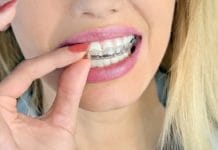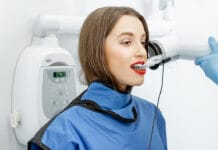Many changes in the dental profession have occurred in recent years, notably a dental workforce shortage already in progress before 2020 that became exacerbated by a pandemic. While a workforce shortage places pressure on dentistry, it also allows for growth and change within those dental professions.
Dentists are investing in employee retention, and dental auxiliary staff is taking the opportunity to find their most ideal position. In 2018, a Health Resources and Services Administration (HRSA) task force determined the United States to be short more than 152,000 dental health care workers. At that time, that gap was expected to increase with the projected demand for dental care outpacing the projected supply of dental health care workers by 9% between 2019-2025.1
Some factors affecting the dental workforce shortage include:
- A rapidly increasing older population requires greater care.
- Greater numbers of employment and access to dental insurance.
- Overflow from medical practitioners, increasing referrals from medical doctors to dentists.
- Population growth.
Pandemic’s Contribution to Job Shortage
Introduce a pandemic to an already building shortage, and it can become a dire situation, especially in underserved communities. Dental employees left the workforce to retire early due to concerns about safety at the time or a desire for more work-life balance. An April 2021 survey found that 66% of dental hygienists who had been employed as of March 2020 who were not currently working had left employment voluntarily, 42.9% did not want to return until the pandemic was under control, and 38.1% had concerns about their employer’s adherence to workplace safety standards.6
A Journal of Dental Hygiene panel of 6,976 dental hygienists participated in a 12-month longitudinal study from September 2020 to August 2021. As of August 2021, less than half of the dental hygienists that left dentistry during the pandemic had returned to work. Although there was some rebound from 7.9% in 2020 to 4.9% in 2021, 1.6% of study participants indicated they did not intend to return to work as a dental hygienist. The American Dental Hygienists’ Association estimates there are 150,000 dental hygienists in the United States, while the Bureau of Labor Statistics estimates in 2021, there were 207,190 dental hygienists in the United States.5,7 That 1.6% represents a possible reduction of 3,300 dental hygienists nationwide.5
In a February 2022 letter to the HRSA, the president and executive director of the American Dental Association asked the new HRSA administrator to prioritize several issues, including addressing dental workforce shortages and oral health disparities.3 The hope is to address dental workforce shortages through Title VII oral health training grants ‒ yet the dental workforce shortage is expected to last through 2025.1
Challenges of Recruiting Employees
A May 2021 poll from the American Dental Association’s (ADA) Health Policy Institute found that owner dentists are recruiting dental assistants (35.8%), dental hygienists (28.8%), administrative staff (26.5%), and associate dentists (13.1%); all four percentages represent an increase in recruitment since October 2020. Compared to pre-pandemic, more than 80% of owner dentists currently hiring find recruitment of dental hygienists and dental assistants extremely challenging.6 Owner dentists not only have to compete with other dental offices but recruiters for corporate offices and temporary placement agencies as well.
It is important to keep in mind the size and production of the office you work in or are interviewing at. High pay may be difficult for dentists as they recover from lower-than-normal patient volumes and rising overhead. Nevertheless, an ADA Health Policy Institute May 2021 poll shows hiring dentists have increased pay rates: 73.1% raised pay for dental assistants; 70.7% for dental hygienists; and 67.1% raised pay for administrative staff.6
Dentists may have to weigh the revenue loss that occurs when a team is down a member against offering a higher pay rate to attract a quality candidate. In an ADA website article, Michelle Steinhubel, DDS, said it “creates much more pressure on the entire office as each team member is asked to step outside their primary duties to help others, all with the aim of creating a smooth and seamless experience for the patient.”1,6
Time Right for a Change?
This is not the first shortage in the dental workforce and likely will not be the last. It is a perfect time to find a “unicorn” office. Dental hygienists who have stayed in the profession are finding more work-life balance opportunities, including shorter commutes, increased pay, benefits, and flexible schedules. Now is a better time than any to have a conversation with your current employer or take the leap to find a new dental home.
The Interview Process
First, it is a good idea to research the office you will be applying to. Dress professionally or in scrubs if it is a working interview. Look up their website and reviews; knowing detailed information about an office can allow a candidate to stand out.2
Present as capable, confident, and enthusiastic without being boastful. Have a 30-second “pitch” introducing who you are, why you’re right for the position, and what you can add to their team. Perhaps practice this pitch in a mirror or with a spouse or friend before interviews. Remember that if you have been invited to an interview, your resume has spoken for itself, and they would now like to get to know you.2
Traditionally it is important to review a few standard interview questions an employer may ask:
- Why are you leaving your current position? If leaving a position to seek higher pay or benefits, be up-front with the interviewer to be sure the new position can fulfill the needs your current position cannot. Some corporate offices may offer benefits that private practice cannot afford. Keep this in mind when searching for new employment, research current rates in the area, and factor in benefits to the requested rate.
- Short- and long-term goals? Where do you see yourself in one year or five? Most employers are looking for longevity; interviewees should be honest about future goals and aspirations.
- What is your educational background? This does not only include where a person attended school, but any other certifications and continuing education done on a regular basis to improve skills and stay up-to-date on evidence-based research.
- What are your strengths and weaknesses as a dental hygienist? Use this opportunity to share the best attributes- attention to detail or the ability to connect with patients. Alternately, share professional challenges and how they were overcome.
- Are you familiar with HIPAA and OSHA? These practices are cornerstones of the standard of care in dentistry. It is important to be up-to-date on training in both HIPAA and OSHA and refresh knowledge before interviewing.
- What were your duties in your last role? Elaborate on duties pertinent to the position, but share previously performed daily duties that contribute to teamwork in an office.
- Give an example of solving conflict or anxiety with a patient.4
Professionals will always tell you to be prepared for what an interviewer may ask you. However, this is also a moment to consider what questions you may have about a new opportunity. An interview should always be a two-way conversation.2 Do not be afraid to ask specific questions before committing to a position. Below is a list of suggested questions for a dental hygiene position:
Getting to know the office
- Why are you hiring?
- How long has your longest employee been with the office?
- Who schedules recall appointments?
- Who orders supplies?
- Is travel or continuing education required by the office aside from what is required for state licensing?
- How often does the hygiene schedule “fall apart”? What is the expectation for the dental hygienist during cancellations or no-shows?
- How far out is the hygiene schedule booked?
- Does the dentist or hygienist see new patients for their initial visit? (If the hygienist, have you checked your state’s dental practice act, and is this legal?)
- How late is a patient allowed to arrive and still be seen for their appointment?
The dental hygiene position
- Ask to see where you would be working.
- What is the expected appointment flow?
- Is this an existing or new hygiene column?
- How many columns is the dental hygienist expected to work? Is there a hygiene dental assistant?
- How often are radiographs and full periodontal charting expected?
- Who reviews treatment plans?
- At what point does the office refer a patient to a periodontist?
- What is the method of communication with the dentist for an exam? Interrupted exams?
- What expanded functions are the dental hygienists expected to perform?
- Do dental hygienists provide local anesthesia for the dentist? (If applicable)
- How often are dental hygiene instruments replaced or purchased?
- What is the office protocol for cold sores, heart attack, joint replacement, etc.? Is there a consequence if the dental hygienist chooses to reschedule a patient with these concerns?
Benefits
- Are uniforms provided? How often?
- Are uniforms laundered in-office?
- Is there a bonus system? If so, how is it structured?
- Is there a retirement plan/contribution offered?
- Paid sick and/or vacation time?
- Who is responsible for finding coverage for time off?
When the interview closes, take an opportunity to make a lasting impression, a handshake, a smile with eye contact, and thanks for their time and consideration.
Following an interview, it is important to send a thank you note or email. Thank the office for the interview, clarify or ask any questions missed in the interview, and reiterate an eagerness to join their team.1
Dental hygienists are highly skilled professionals who, in most states, require a license meaning it takes several years to graduate as a qualified hygienist. These educational requirements contribute to shortages since training a dental hygienist cannot be done “on the job.”
A dental workforce shortage is a great opportunity for change, but keep in mind that it can be stressful for dental offices, staff, and patients who benefit from a consistent daily flow. In recent months, dentists have reportedly experienced an up-tick in poor attendance and no-shows from new hires.
Dental professionals should be open to exploring options, but those seeking new opportunities should be upfront and open with interviewing offices to avoid unprofessional conduct. A position should not be accepted if the candidate is unsure or still fielding other offers.6
Before you leave, check out the Today’s RDH self-study CE courses. All courses are peer-reviewed and non-sponsored to focus solely on high-quality education. Click here now.
Listen to the Today’s RDH Dental Hygiene Podcast Below:
References
- Baker, T. (2019, October 7). 7 Reasons There’s a Dental Worker Shortage and What Dentists Can Do About It. LinkedIn. https://www.linkedin.com/pulse/7-reasons-theres-dental-worker-shortage-what-dentists-tracy-baker
- Dental Hygienist Interview Questions & Best Answers. (n.d.). Diamond Braces. https://diamondbraces.com/careers/dental-hygienist-interviews/
- Garvin, J. (2022, February 17). ADA urges HRSA to prioritize dental workforce shortages, oral health disparities. American Dental Association. https://www.ada.org/publications/ada-news/2022/february/ada-urges-hrsa-to-prioritize-dental-workforce-shortages-oral-health-disparities
- 35 Dental Hygiene Interview Questions (With Sample Answers). (2021, August 18). Indeed. https://www.indeed.com/career-advice/interviewing/dental-hygiene-interview-questions
- Rappé, J., Hoeft, E. (2022, February 22). Research reveals impact of COVID-19 on dental hygienists. American Dental Association. https://www.ada.org/about/press-releases/research-reveals-impact-of-covid-19-on-dental-hygienists
- Versaci, M.B. (2021, June 9). Understaffed and ready to hire, dentists face applicant shortages as they emerge from COVID-19 pandemic. American Dental Association. https://www.ada.org/publications/ada-news/2021/june/dentists-face-applicant-shortages-as-they-emerge-from-covid-19-pandemic
- Occupational Employment and Wages, May 2021: Dental Hygienists. (2022, March 31). U.S. Bureau of labor and Statistics. https://www.bls.gov/oes/current/oes291292.htm











